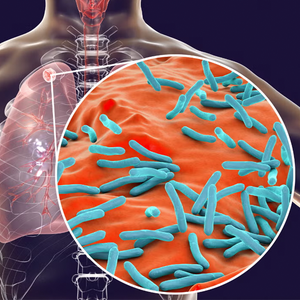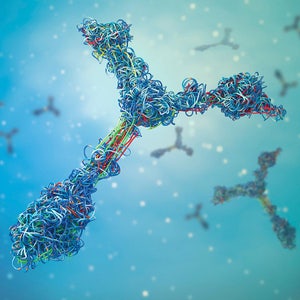To implement social distancing for COVID-19, many organizations and companies require fewer staff members to be in the laboratory simultaneously. Researchers may evaluate alternatives to widely used but tedious assay workflows. One example would be conventional techniques such as ELISA (enzyme-linked immunosorbent assay), which is used to detect and screen biomarkers, protein targets, and their activity. An important target or biomarker family are cytokines that are commonly screened using ELISA, which can leverage shorter and efficient workflow options without compromising assay performance and data quality.
Cytokine screening using ELISA utilizes numerous steps over 12 hours, and its performance also depends on reagent quality and end-user skills and handling techniques. Although next-generation ELISA technologies offer shorter workflows, faster turnaround, and the evaluation of multiple cytokines in a single experiment, these methods are hampered by the traditional narrow dynamic range and limited sensitivity compared to newer innovations that also enable multiplex assay formats.
Advances in cytokine screening
Newer, higher throughput assays offer increased speed, wider dynamic range, and greater sensitivity. In fewer assay steps, accurate results can be obtained within a couple of hours. Contemporary formats can also help improve data quality due to reduced background and interference correction.
Heterogeneous assays
Many multiplex assay technologies are commercially available in different formats. Time-resolved fluorescence (TRF) methodologies extend the acceptor emission to create long-lived fluorescence with a lanthanide, such as Europium cryptate. The TRF assays offer higher sensitivity and a wider dynamic range, enabling less reagent use and improved detection of low levels of analyte, eliminating the need to dilute samples. With extended fluorescence, TRF reduces sample interference, making it relatively easy to automate. For example, DELFIA, a TRF platform from Revvity, can 4-plex cytokines in a single well.
Homogeneous assays
AlphaScreen™ and AlphaLISA™ offer robust proximity-based assays to identify cytokines and biomarkers in high-throughput screening. For example, Revvity’s Alpha (Amplified Luminescent Proximity Homogeneous Assay) stands out for its wide dynamic range, making it well suited for complex matrix samples like blood, plasma, saliva, and CNS fluid. Alpha’s robust performance also makes it amenable to miniaturization and automation.
Homogeneous time-resolved fluorescence (HTRF), an all-in-one-well, add-and-read assay, uses a fluorescent signal generated via the proximity of an acceptor (short-lived, longwave fluorescence) and a donor (long-lived, shortwave fluorescence, such as Europium cryptate or Terbium cryptate). With extended signal stability, HTRF molecules do not photobleach and can be read repeatedly.
Compatible plate readers
Most plate readers, such as Revvity’s EnVision™ and Victor Nivo™, can read multiple assay formats and offer enhanced security software that helps facilitate compliance with GMP 21 CFR Part 11. In the GMP environment, the instrument can also be used for QA/QC workflows.
Role of cytokine testing
It is critical to have a robust and sensitive cytokine monitoring platform for preclinical and clinical research. Cytokines are important prognostic biomarkers providing insight into physiological networks that are central to metabolic and disease pathways. By leveraging recent advances in technology, laboratories can reduce bench time across multiple workflows. Valuable time can be saved with walk-away automation and miniaturization, higher throughput formats, and efficient protocols.
When accurate results are generated in an hour or two, it frees up limited staffing resources to do other essential work. Furthermore, these new assay formats provide superior data quality with reduced background, interference correction, and a brighter signal, allowing for higher sensitivity and wider dynamic range, helping to accelerate drug discovery and development with reliable data. For more granular information on this topic, please see our white paper “Cytokine and Biomarker Screening – From Conventional to Next-Generation Solutions.”
For research use only. Not for use in diagnostic procedures.
References:
- Tang Y, Liu J, Zhang D, Xu Z, Ji J, Wen, C. Cytokine storm in COVID-19: The current evidence and treatment strategies. Frontiers in Immunology. 2020; 11.
- Yallow RS, Berson SA. Assay of plasma insulin in human subjects by immunological methods. Nature, 1959; 184 (Suppl 21):1648-1649.
- Crowther, JA. The ELISA Guidebook. Humana Press; Totowa, NJ: 2001.
- Peters CD, Jespersen B, Nørregaard R. AlphaLISA versus ELISA-based detection of interleukin 18 in healthy subjects and patients with end-stage renal disease. Scandinavian Journal of Clinical and Laboratory Investigation. 2012; 72(8):583-592. DOI: 10.3109/00365513.2012.713175
- Degorce F, et al. HTRF: A technology tailored for drug discovery-a review of theoretical aspects and recent applications. Current Chemical Genomics. 2009; (3):22-32. https://pubmed.ncbi.nlm.nih.gov/20161833/
- Cox KL, Devanarayan V, Kriauciunas A, et al. Immunoassay Methods. 2012 May 1 [Updated 2019 Jul 8]. In: Markossian S, Sittampalam GS, Grossman A, et al., editors. Assay Guidance Manual [Internet]. Bethesda (MD): Eli Lilly & Company and the National Center for Advancing Translational Sciences. Available from: https://www.ncbi.nlm.nih.gov/books/NBK92434/
- Chowdhury F, Williams A, Johnson P. Validation and comparison of two multiplex technologies, Luminex® and mesoscale discovery for human cytokine profiling. Journal of Immunological Methods. 2009; (340):55-64. https://www.sciencedirect.com/science/article/abs/pii/S0022175908003116?via%3Dihub










































